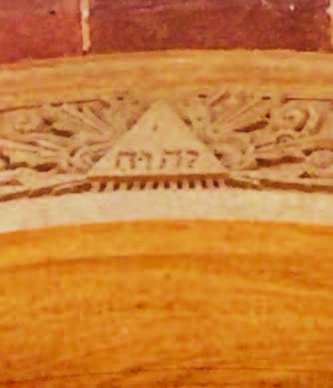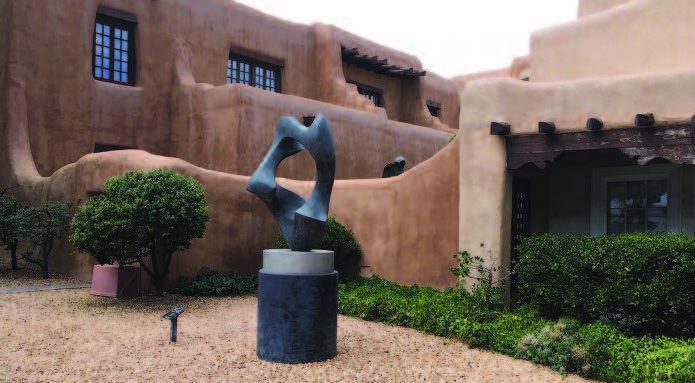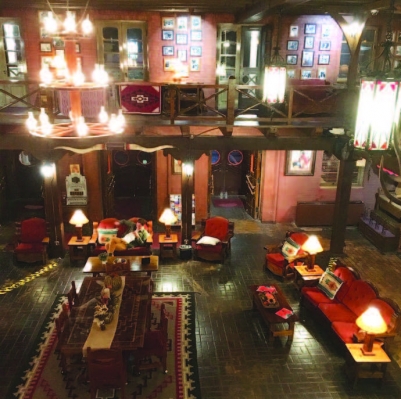Secret Jews of New Mexico
When Jordi was just ten years old, his grandfather said, "This is how we butcher a chicken," as he demonstrated the kosher slaughtering method. Jordi's grandfather thereby revealed that the family was Jewish, a startling surprise for a young boy in the 1990s living in Spain, whose family was ostensibly Roman Catholic. This revelation that they were Crypto-Jews (secret Jews), had a profound effect on Jordi, who eventually became the first rabbi in 500 years to be ordained in Spain.
The Crypto-Jews of New Mexico was the subject of the great 5-day Road Scholar course that Michal and I recently attended in Santa Fe, NM. Jordi (Rabbi Jordi Gendra-Molina, Ph.D., M.H.L.) was the excellent leader of the course, and his personal story is a microcosm of this phenomenon.
He told us that Crypto-Jews is the favored scholarly term for Jews who were converted to Catholicism in the late 15th century, first in Spain and shortly after in Portugal. Other terms in use are Conversos (converted Jews, whether sincere or not), and Anusim (Hebrew: forced Jewish converts). If you've heard the term Marranos, don't use it; it was a derogatory name pertaining to "pig."
While 1492 is the year commonly known for the start of the Spanish Inquisition, Jews had been expelled from certain European countries in preceding centuries, such as England's 1292 Edict of Expulsion and during the final decade of the 14th century, when many Spanish Jews had been forced to convert to Catholicism. King Ferdinand and Queen Isabella were the progenitors of the Inquisition, in addition to being very busy dispatching Christopher Columbus to find the short route to the fabled Indies.
Culminating in 1492, the Jews in Spain, who had influence and wealth far beyond their numbers, were given only a short period to either leave the country or become Christians. The Inquisition itself dealt only with the so-called New Christians (former Jews or Muslims), those who decided, sincerely or not, to accept a simple conversion ceremony. While the numbers are uncertain, tens of thousands of Jews did leave Spain in every direction, some even accompanying Columbus on his voyages to the New World. Jews/Crypto-Jews were typically the navigators during this period. In the 16th century, they were even conquistadors - leaders in the Spanish conquests of America, Mexico, and Peru.
There were great lecturers and former Crypto-Jews who addressed our group. For brevity's sake, I'm concentrating on Jordi's revelations and the lecture and film of the anthropologist Ron Hart. His subject was specifically, "Spanish Jews and New Mexico Conversos: The Connecting Cultural Historical Helix." Hart is also publisher and editor of Gaon Books. As part of his presentation, Ron screened a very informative, full length film for us, Challah Rising in the Desert. See: www.youtube.com/user/gaonbooks?app=desktop
The Muslim conquest of the Iberian Peninsula in the 8th century CE had been relatively tolerable for the Jews, better than the previous Christian rule. The Muslim so-called Golden Age lasted until the 13th century, when the Christian re-conquest sparked renewed Antisemitism.
The Inquisition was a concerted effort to rout out secret Jews, whose conversion had been insincere. Many Jewish families, now called New Christians, resorted to having fake genealogies written to "prove" they had no Jewish ancestors in their background. One could be denounced to the Inquisition for practicing Jewish rituals, whether it was true or not. The "Old" Christians who singled out "Judaizers" sometimes shared in the wealth that was confiscated by the Church from the hapless New Christians. They were segregated, sometimes in ghettos or in villages, inadvertently preventing intermarriage with the mass Christian population.
New Christians were tortured, burned at the stake, or occasionally not proved guilty for lighting candles in a closet, abstaining from eating bread during Easter time (coinciding with Passover), inscribing something cryptic on a door post or lintel signifying Jews resided there, assembling in a basement or secret room to say prayers, refusing to eat pork, and other Jewish customs, which the Church feared would dilute "true" Christianity.
In 1497 the Jewish sojourn in neighboring Portugal, many Spanish Jews had fled five years earlier, came to an end. In contrast to Spain there was no prior notice of impending conversion, which would have allowed Jews to leave voluntarily. The Portuguese king, son in law of the Spanish monarchs Ferdinand and Isabella, simply ordered all the Jews to congregate in the town squares at a certain time (Friday March 19, 1497, the first day of Passover), when they were summarily "sprinkled" with water and "baptized." Subsequently, many Crypto-Jews crossed the ocean to escape the Inquisition.
Some Jews and Crypto-Jews who left Iberia went to the New World. Others declined to cross the ocean and migrated to Amsterdam, Italy, Morocco, the Ottoman Empire (including Palestine), Germany, and Poland. Their numbers were so numerous that "Portuguese" became the code word for being a Jew. New languages developed, such as Ladino and other Judeo-Spanish languages in the eastern Mediterranean, and Yiddish in Germany, the Netherlands, and England.
Inevitably, in the late 1500s, the Inquisition followed the Crypto-Jews to Mexico, causing many Crypto-Jews to move further north in Mexico, into the vast territory that later became the State of New Mexico in 1846 (an American conquest).
Both Ron Hart and Jordi emphasized the culture of hiding which permeated Crypto-Jewish life. Families with Jewish backgrounds knew each other, banded together, and there were many marriages between them. By1821 the Inquisition had ended in Mexico, including northern Mexico. Shortly before New Mexico became a state, a French archbishop was assigned by the Church to Santa Fe. One of his supporters was a wealthy Santa Fe Jew who provided much of the financing of the new European-style Cathedral. When the archbishop asked about how to repay the loan, he was requested only to have the Hebrew inscription "Adonai" on the keystone above the main entrance. (It's still prominent today.)
In the period from 1650 to 1950 there was virtually no mention of Crypto-Jews. Fear of the Inquisition had declined or become obsolete, but it was still shameful to be overtly Jewish and was considered strictly a family matter. The New Christians' Jewish background, which was often obscure, was undesirable because it was a dilution of their Christian beliefs. But in 1992, the anniversary of the expulsion from Spain 500 years before awakened great interest in possible Jewish ancestry, making it a subject for historical study by some Christians in the Southwest.
Even before that, some New Mexico Christians with Crypto-Jewish roots began to come forward to tell their family stories and background. Until the family secrets were revealed, many New Mexicans didn't realize that their somewhat strange family customs, often carried on by a grandfather or grandmother, were rooted in Judaism. In some families, a sense of Jewish memory was clearly passed down, if not the actual practices.
Still, when a Catholic sibling "came out," other family members weren't necessarily pleased. Those who celebrated their Jewish background, even in the late 20th century, were commonly pressured by family members to keep quiet, because identifying as Jewish wasn't desirable. It was a complex secret to be discovered and then accepted, or rejected.
Besides learning about the Crypto-Jews per se, we learned much about the history of New Mexico, met a Jewish artist from the area with a hidden Jewish background, had a walking tour of Santa Fe, saw a play related to our subject, took a field trip to Taos, explored Taos Pueblo, and went to Centinela, a village of weavers where a descendant of a Crypto-Jewish family carries on the tradition of centuries-old weaving. There was also free time to spend in town and on a visit to Santa Fe's Museum Hill, where we spent time in the fabulous Museum of International Folk Art.
The Road Scholar's course on Crypto-Jews enhanced our knowledge of the subject. It also revealed a tremendous amount of additional information available for those who want to take a deep dive into the phenomenon of Jews who carried on their heritage after forced conversion to Christianity, often only discovering their Jewish roots until hundreds of years later.
An extensive reading list appears on the website www.roadscholar.org/find-an-adventure/22854/New-Mexico-s-Conversos-and-Crypto-Jews-in-Santa-Fe
Additional recommended reading:
My 15 Grandmothers - Genie Milgrom
Jewish Pirates of the Caribbean - Edward Kritzler
Gateway to the Moon - Mary Morris
Jordi's website - http://rabbigendra.net











Comments